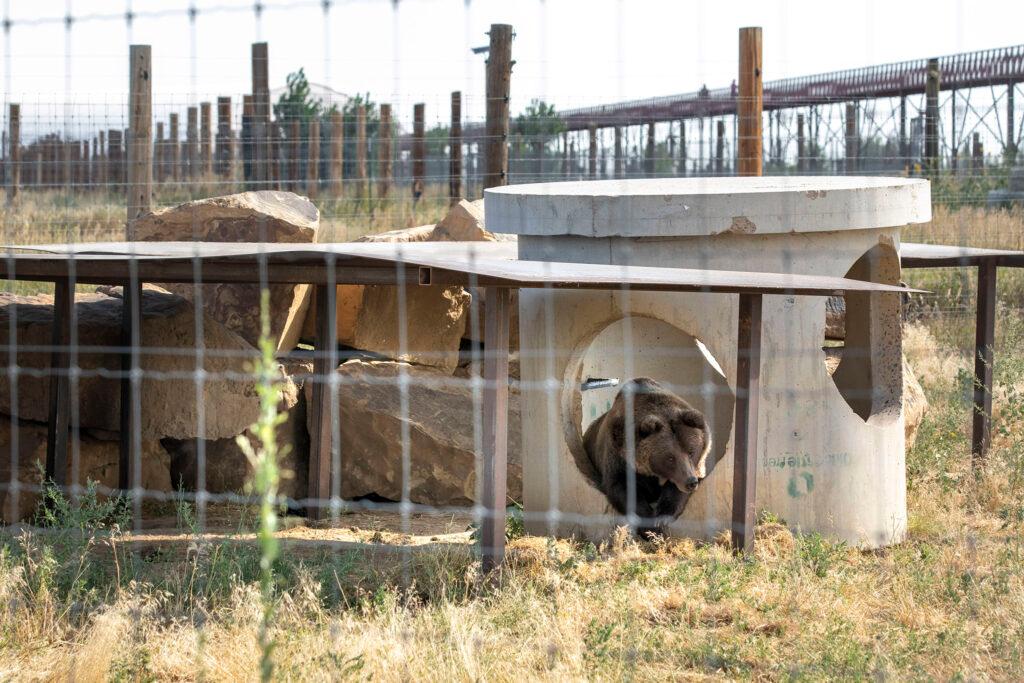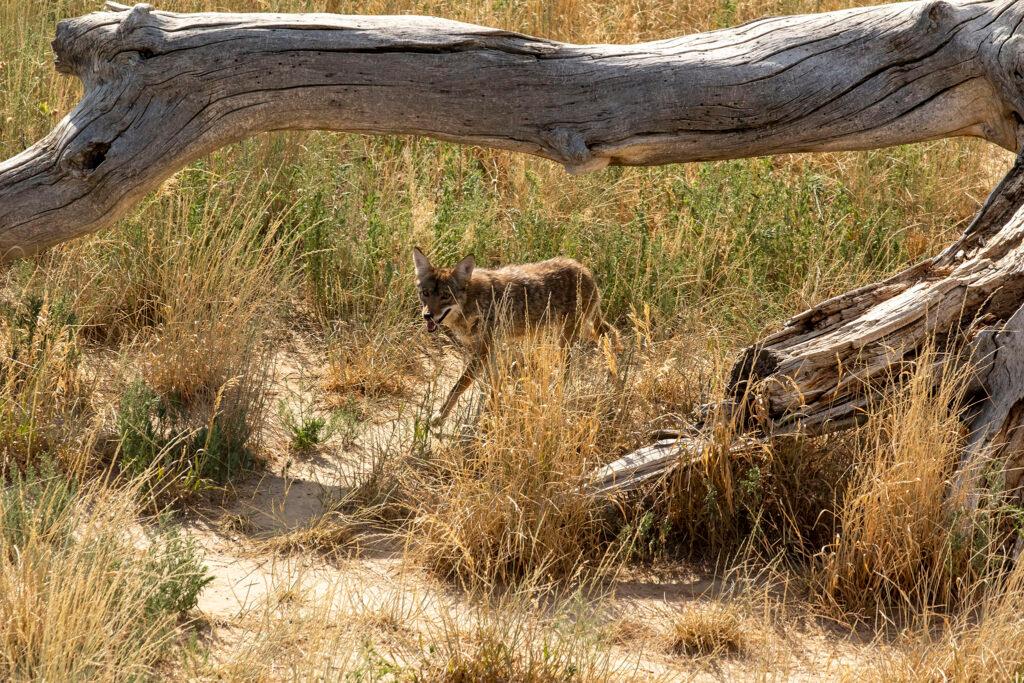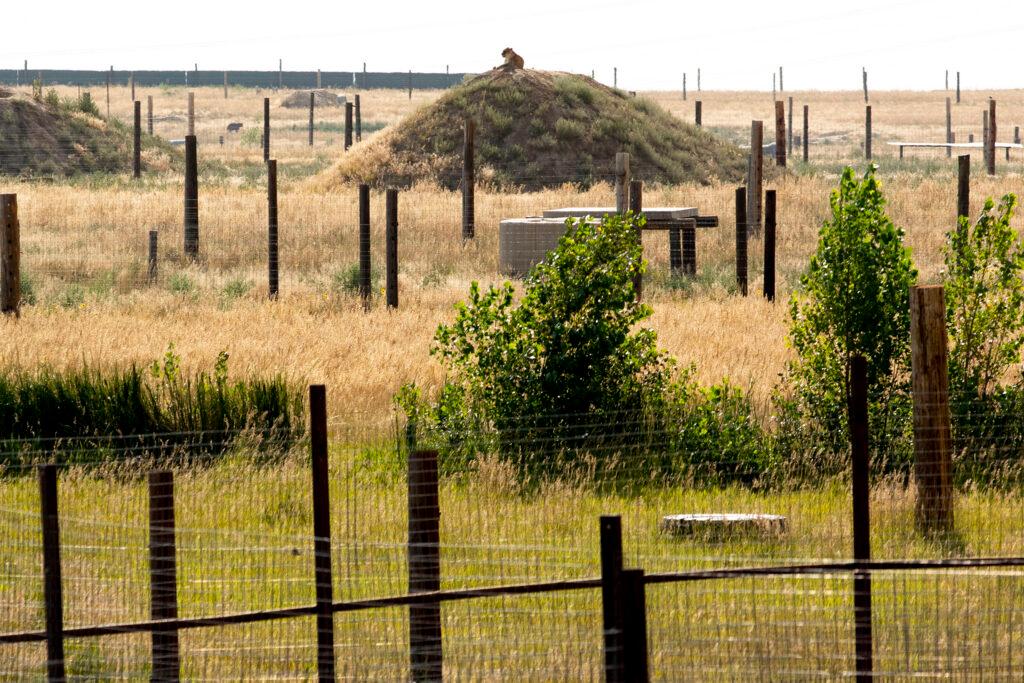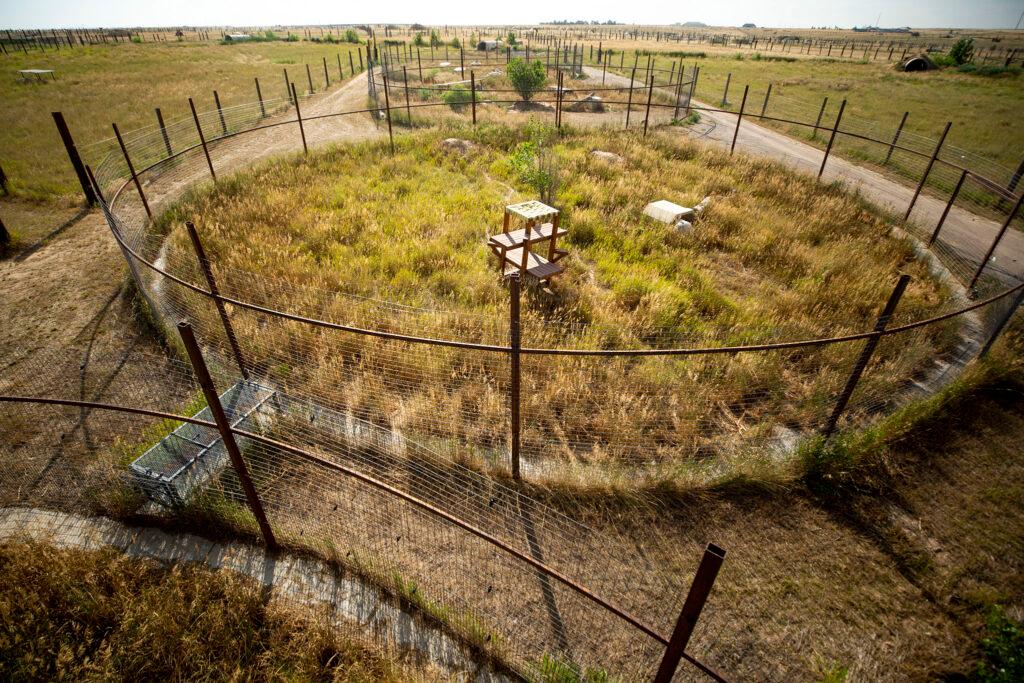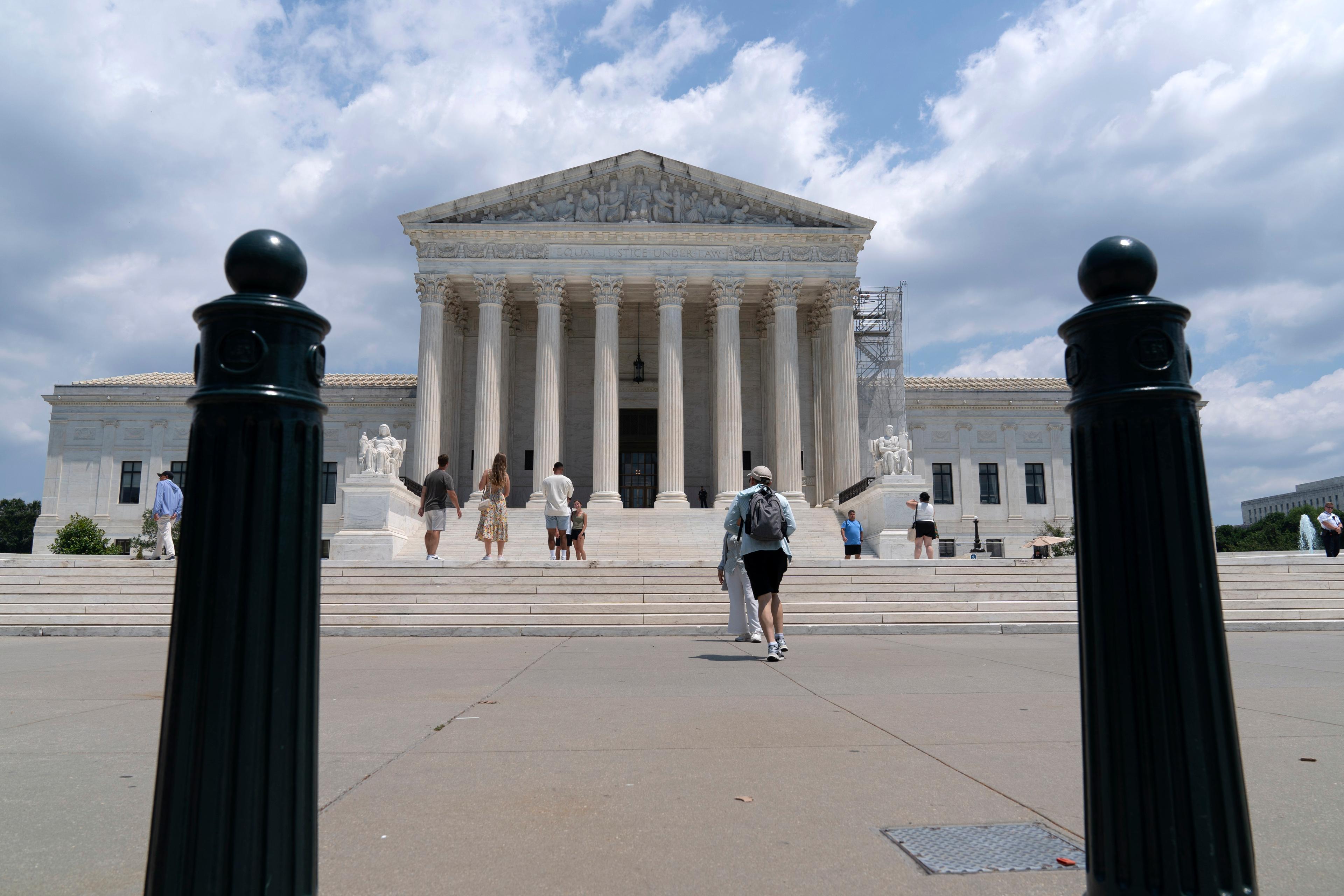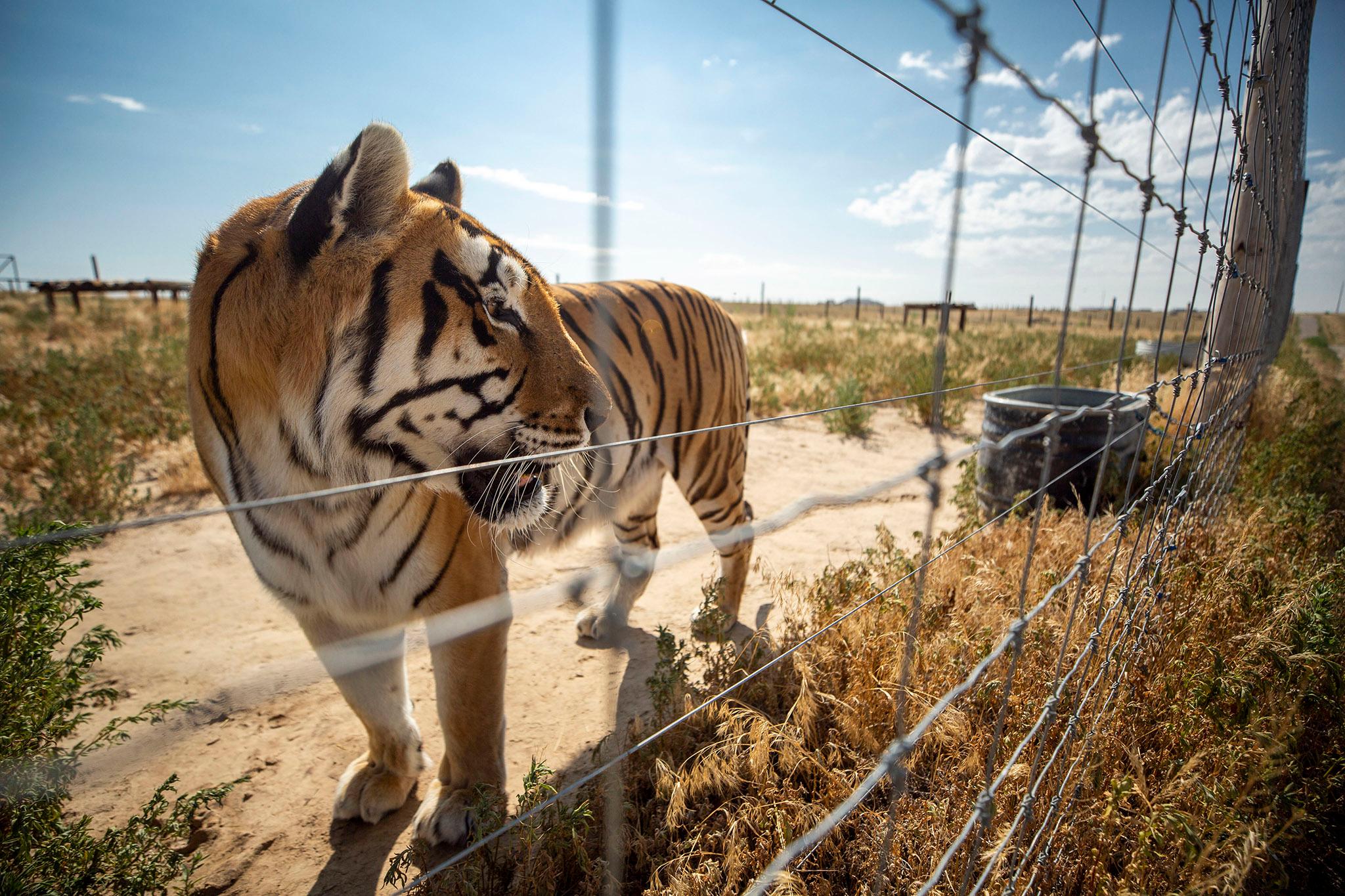
Editor's note: CPR News got a behind-the-scenes look at the animals of the Wild Animal Sanctuary that is not typical of most visits.
Some of the animals that roam the Wild Animal Sanctuary on the plains outside Denver spent so many of their early years in tiny cages that they had to learn how to walk again.
Some felt dirt and grass for the very first time when they arrived here.
Around 500 animals live at the sanctuary near Keenesburg. There are bears, tigers, lions, wolves and others rescued from roadside zoos and circuses or from owners who thought they’d make good pets.
Others in Keenesburg and a newer facility called the Wild Animal Refuge in southeast Colorado near Springfield were in Netflix’s “Tiger King” series, featuring a zookeeper named Joe Exotic, who was later sentenced to 22 years in prison for trying to hire someone to kill an animal rights activist who’d criticized his facilities.
Sanctuary founder and CEO Pat Craig, who has spent 40 years doing this work, said he and his team travel the world regularly to rescue animals.
The work is constant and now the sanctuary in Keenesburg is full, so they’ve opened the refuge of almost 10,000 acres near Springfield. That facility is rarely open to visitors.
The need for more space is a symptom of what Craig calls a captive wildlife crisis that began in the late 1960s as people around the world got more access to animals.
Over the years “ it just turned into this Wild West kind of thing, where people were running around buying and breeding and selling and, and they basically permeated the entire United States with a whole subclass of animals outside the zoo system.”
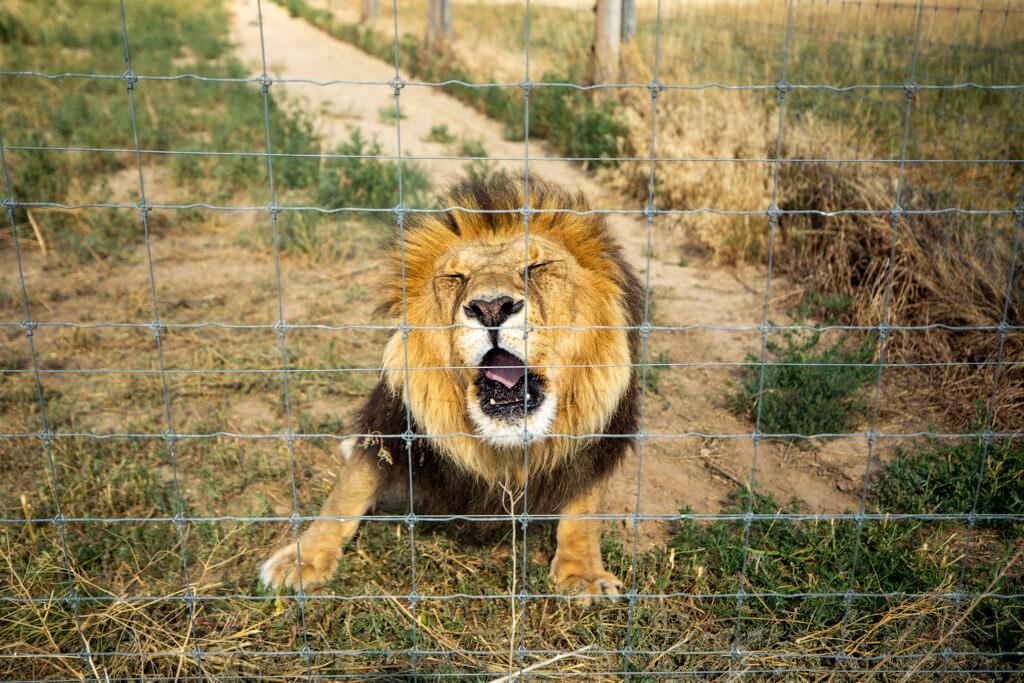
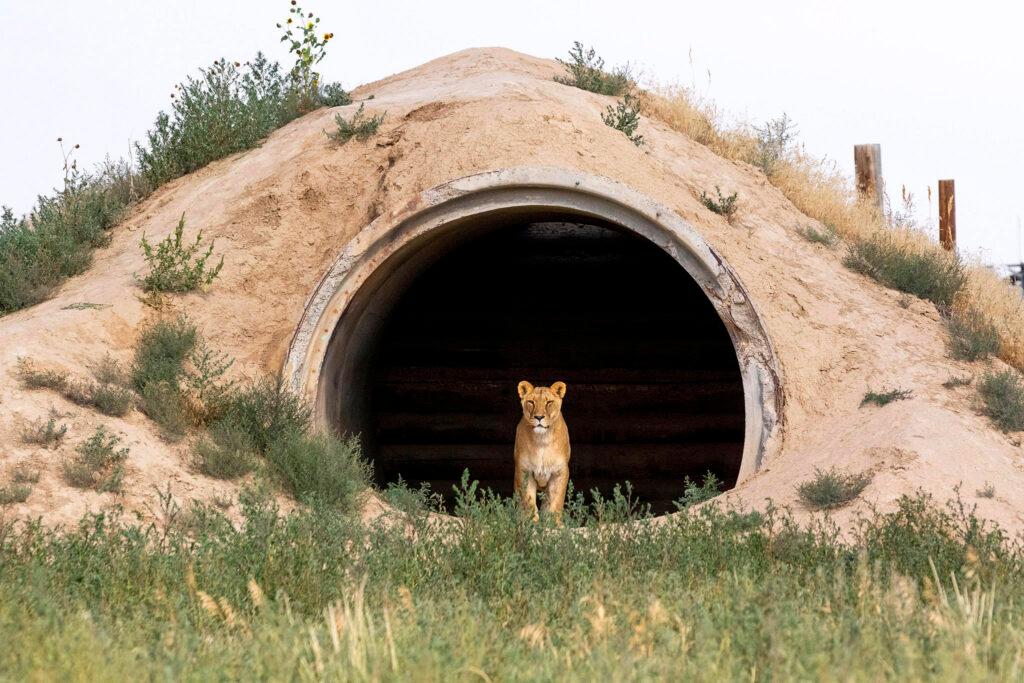
The sanctuary tries to limit how humans interact with the animals due to past abuses they've suffered.
Visitors, for example, are prohibited from carrying cigarettes because some of the bears still react to the slightest hint of that smell. Back in the day, it seems, their circus trainers stuffed tobacco into chunks of taffy to reward them for learning tricks.
“It’s still a trigger,” Craig said.
None of the animals at the sanctuary live free — electric fences enclose their spaces without obstructing their views of the landscape — but their big habitats are designed to bring them as close to nature as possible.
Take, for instance, a black leopard named Jumani, who regularly struts across a bridge in his enclosure. “Large carnivores love to be elevated so they can see their territory,” Craig said.
Jumani was rescued from a roadside zoo in New York. “It was the middle of winter. They were all freezing. There was no heat provided. He had frostbite all over his body and open sores and horrific conditions,” Craig said. “And so we were able to rescue quite a number of animals from that roadside zoo and bring them here.”
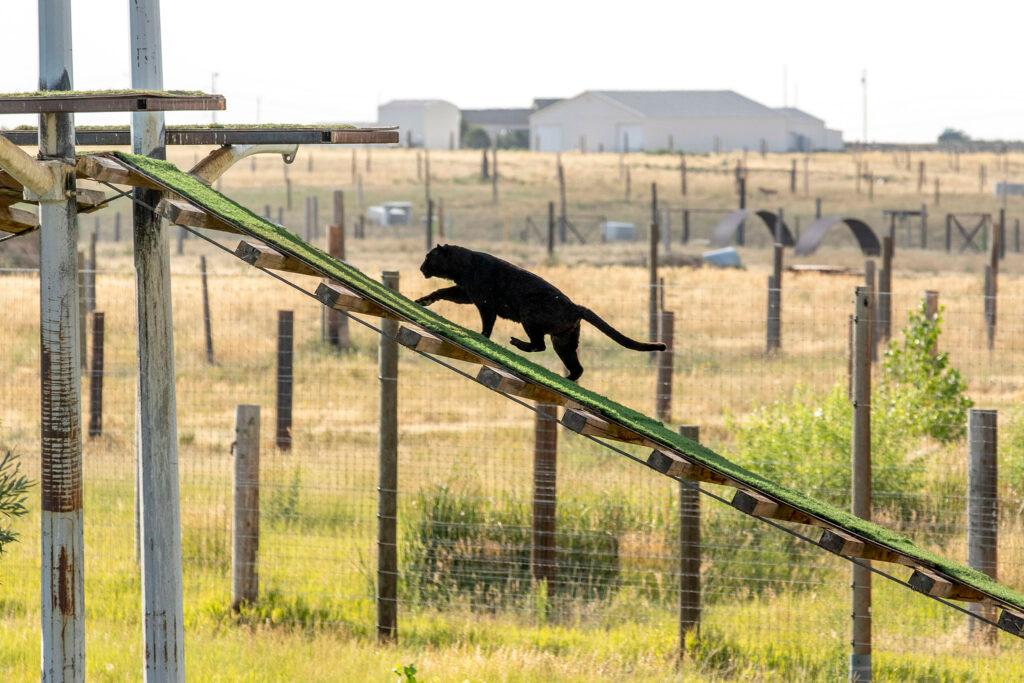
Visitors walk around the sanctuary on an elevated walkway built above the animals’ living spaces. Animals are territorial, Craig said, “so when people are on ground level, especially people they don't know, and you're walking right by their habitat, they feel like that's an encroachment, that you're a threat.”
But the animals aren’t stressed at all if people are walking above them. “Animals don’t consider the sky or air to be territory, so it doesn't bug them a bit. Even if you're 10 feet above them it still doesn't bother them like 10 feet outside their habitat,” he said.
While the Keenesburg site looks across the wide open prairie, the refuge in southern Colorado is much different. “It’s beautiful because it's completely forested with evergreens and rugged canyons with big rock outcroppings,” Craig said. “Most of all the new rescues go straight to that facility and it’s pretty amazing to see the animals down there live as close to living in the wild as you could ever imagine. We supply food and medical care, but otherwise they're just exploring their giant habitats.”
More information about visiting can be found here.
